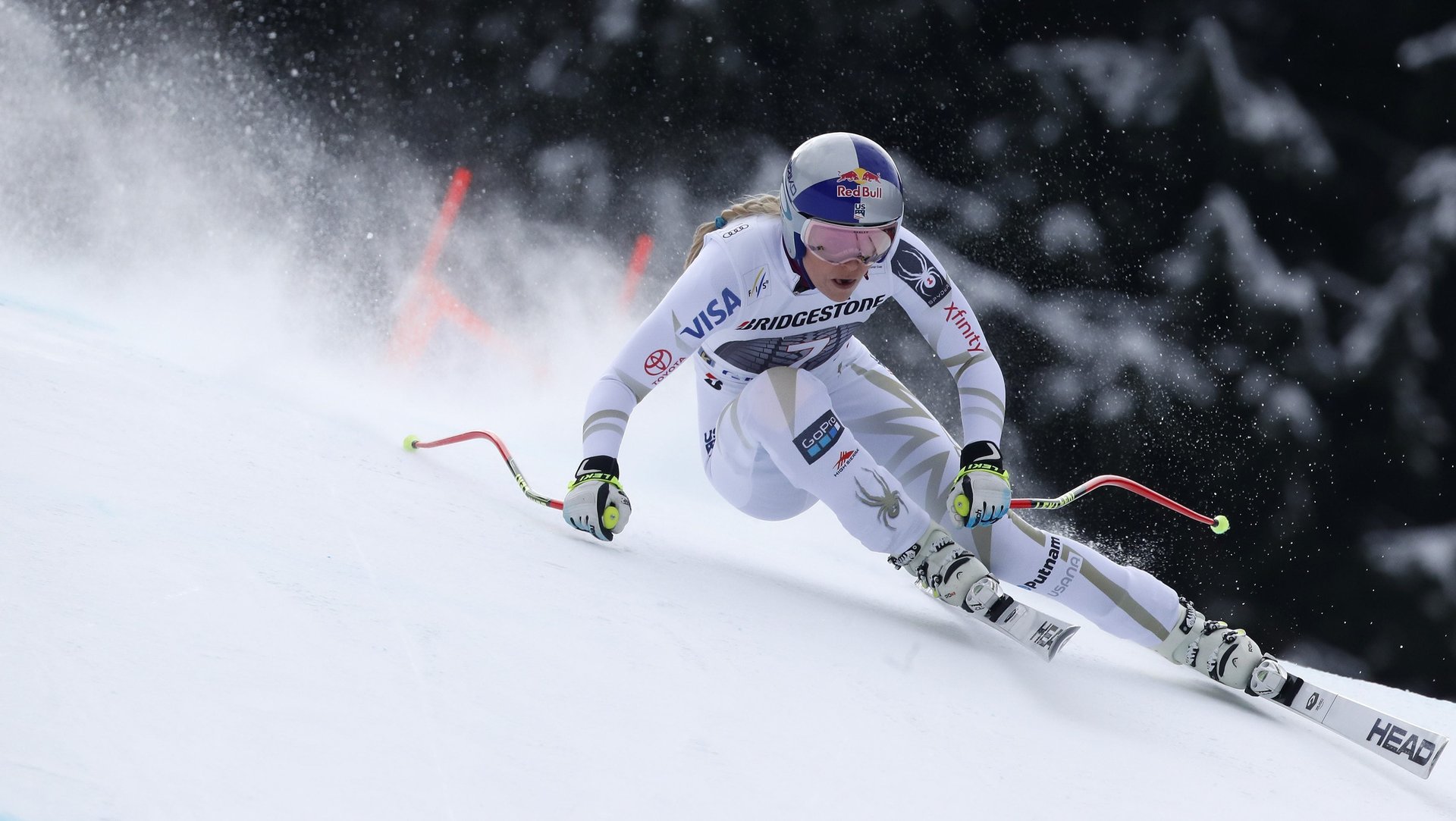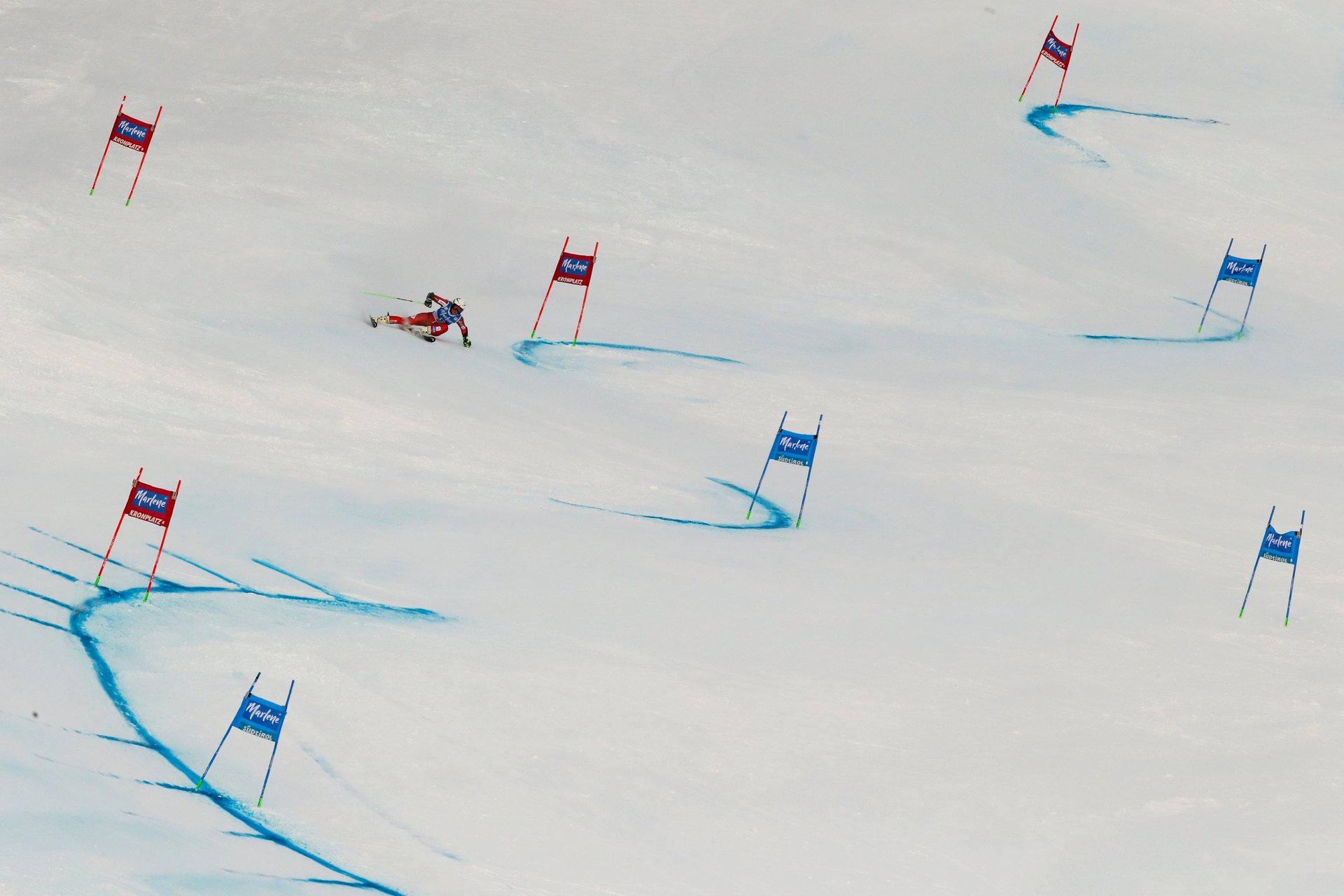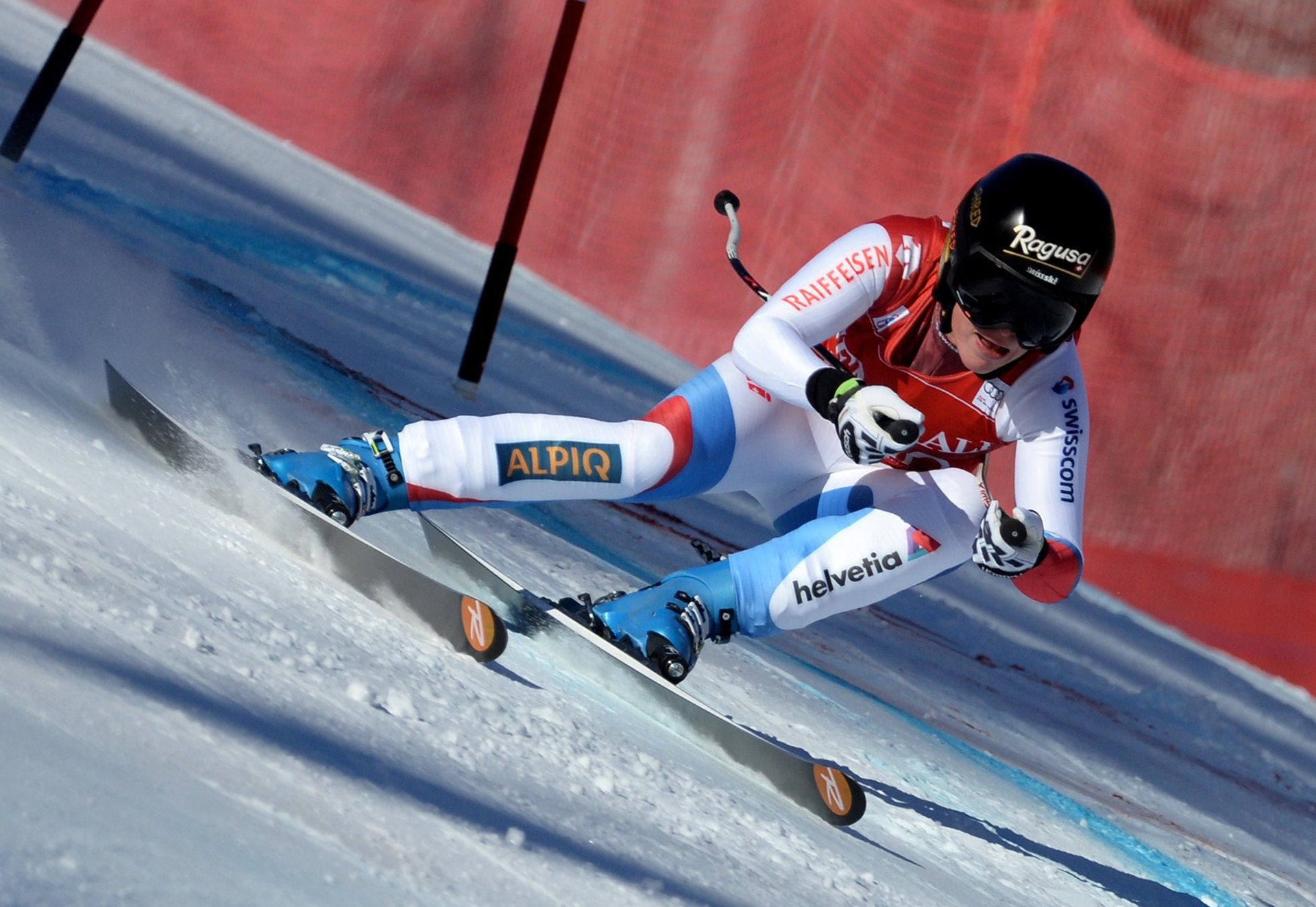A short guide to understanding alpine skiing during the Winter Olympics
How you feel about alpine skiing depends a lot on where you grew up. For Austrians, it’s basically the national sport, while most Australians could care less. In most parts of Europe, where I grew up and belonged to youth ski-racing teams, a ski holiday is much more accessible than in the US, both in terms of travel and cost.


How you feel about alpine skiing depends a lot on where you grew up. For Austrians, it’s basically the national sport, while most Australians could care less. In most parts of Europe, where I grew up and belonged to youth ski-racing teams, a ski holiday is much more accessible than in the US, both in terms of travel and cost.
But I’m here to convince you that regardless of whether you live in a climate where you can pop on your skis as soon as you leave the house, or whether water skis would be more appropriate, alpine skiing is the most thrilling sport to watch during the Winter Olympics. Where there’s speed, beautiful nature, and unpredictability, there has to be fun, right?
What is slalom or downhill or any of this?
During the PyeongChang winter games, we will see five disciplines—often called events—for men and women, and one team competition. The easiest way to understand the differences is by the distance between the gates—the alternating red and blue plastic poles that are drilled into the snow that the racers ski around.
First, there’s slalom, where the course is the shortest, as are the skis. The gates are so close that the skiers have to make incredibly quick, tight turns. The goal is to ski down in as direct of a line as possible, while making sure you go through every gate. The racers minimize the path their skis take by slapping the gates down with their shins and hands (making the coolest “thwap” sound ever), “blocking” them out of the way.
Slalom can be slightly confusing, because the gates are made out of single poles, and are set up in different formations that change up the rhythm of the course. But the rapid turns and the technical proficiency the skiers need to navigate the course make it very exciting to watch.
The next one up is the giant slalom, perhaps the most well known out of the four basic events. The gates are made out of two sets of poles that are joined by flags. You have to ski between two sets of one color, trying to make your path down the hill efficiently in medium-length, dynamic turns.

For both the slalom and the giant slalom, the racers have two runs, and the times are added up. The start order in the first run is determined by a combination of a draw and your standing in World Cup rankings. For the second, the top 30 skiers start in reverse order (so the 30th person goes first) to even out their chances. The later on you start, the worse your course conditions will be, sometimes with gnarly ruts, holes and bumps. (Side note: the World Cup is alpine skiing’s race circuit. Skiers compete in races all season, collecting points which at the end determine the best racers of the year.)
The following two events are the super G and the downhill, where you get only one shot. The Super-G is a middle ground between the giant slalom and the downhill, where you’re also speeding to get to the bottom, but where the turns are tighter. The downhill, often called the most prestigious event in alpine skiing, has the fewest turns on the longest distance, and the highest vertical drop, which means you can go very, very fast.
The first two disciplines are so-called “technical” disciplines, while the latter two are “speed” disciplines. Skiers usually specialize in either the first or the second category, often choosing to compete in only the events that they excel in. The final discipline, the super combined, tests their versatility, because you have to use two vastly different skill-sets: your slalom dynamism, and your downhill endurance for one run in each event.

The last discipline is a national mixed-team event, introduced during these Olympics for the first time. It’s a fun format: two giant slaloms are set up next to each other, and skiers of the same gender from two teams race to the bottom at the same time. Winners of each heat go on to the next round.
(I won’t get too much into the nitty-gritty of equipment, but it’s important to note that the skis are different for each discipline. Generally, the longer the ski, the bigger the turn radius, and the faster it can go while being relatively stable on the snow.)
Watch Lindsey Vonn, Mikaela Shiffrin, and Marcel Hirscher
I am personally very excited about all the women’s events. Representing the US will be two women who have both been named as contenders to the title of best skier of all time. First, you have Lindsey Vonn, the 33-year-old from Vail, Colorado, who is likely going into her last Olympics. Her career has been as stellar as it has been tumultuous. An incredibly risky skier, Vonn has had her fair share of serious injuries, including multiple fractures and torn ligaments. But this is part of what makes her so incredible of an athlete. She continues to crush it after every recovery.
Vonn has 81 World Cup victories in her career, making her the “winningest” woman in history, and on track to beating the all-time record of the legendary Swede Ingemar Stenmark, who ended his career with 86 wins. She has only two Olympic medals, having been eliminated from the games by injuries twice—so she has a lot to fight for. Vonn’s longstanding goal has been to compete against men in the World Cup, and skiing authorities are slowly warming up to the idea.
But then we have Mikaela Shiffrin, Vonn’s Colorado neighbor, whose Olympic debut at 18 in Sochi four years ago gave her a gold medal in the slalom. Unstoppable in that event, and excellent in giant slalom, Shiffrin has been recently beating her rivals in the speed disciplines as well, taking two podiums in the downhill earlier this season. At 22, she already has 41 World Cup victories. Shiffrin is known to be relentless in her training, her concentration and motivation legendary.
Italian Sophia Goggia and Tina Weirather, of Liechtenstein, have recently been on Vonn’s tail, and the giant slalom has several title contenders, including Viktoria Rebensburg, of Germany, and France’s Tessa Worley. Before you watch an event, it’s helpful to look at the FIS World Cup standings to see who has had good results in each discipline this season. (Of course, the Olympic Games are a completely different kind of pressure, but the ranking could give you some idea of whom to watch for.)
Among the men, Marcel Hirscher is a total beast, taking the World Cup title in the overall competition for six seasons in a row. The giant-slalom rivalry should be fascinating to watch: Hirscher, the current dominant force in the discipline, will be beating off several adversaries, including the American Ted Ligety, so good at giant slalom that he was once nicknamed “Mr. GS”, but who has been recovering from injuries. The Norwegian team of the “Attacking Vikings” is very fun to follow, with the giant Axel Lund Svindal racing his friend, Kjetil Jansrud, in the downhill, along with a slew of other strong competitors, including several mighty Austrians.
What to watch for in alpine skiing
Part of the thrill of watching alpine skiing is just how close these athletes come to each other while they race. When my favorites are about to cross the finish line, I feel myself making that last push along with them. (Actually, I’m also known to be the weirdo who sways along with their turns on the course as well.)
In a run that lasts more than one minute, the difference can be just a hundredth of a second. In fact, it’s almost unusual—except for Mikaela Shiffrin— for a skier to beat her closest rivals by seconds. While you’re watching, you’ll see the time measured at several points during the course, allowing viewers to compare the skier on screen to the fastest current time. In the speed disciplines, you’ll also be able to see just how fast these guys and gals are going: speeds of upwards of 80 miles per hour (130 km) are the norm. That’s much faster than the speed limit for cars on many US highways. And they are not skiing on the same surface as you were during your last weekend trip to the mountains. The slopes are specially hardened for races, making the surface akin to ice rather than snow (also, they are much steeper than they appear on TV).
The skiers will have different strategies for the race. They have to think about what line of turn to take down the mountain, when to take the “tuck” position, curling up into a tight, aerodynamic ball, and when to let the skis just glide. One turn that’s taken too late, one miss-timed tuck can determine the race.
They will also have different skiing styles: while often you’ll see that those who seem more composed and steady in their rhythm do better, sometimes it’s those with the flailing arms and risky moves that come out on top.
Unlike sports like running or weightlifting, there is an ineffable quality to what makes a good skier: beyond endurance and muscles, skills and talent are crucial.
How dangerous is it?
The forces that are affecting a skier while they are speeding in the downhill or making dynamic turns in the giant slalom are enormous. Outside Magazine points out:
World Cup ski racers are fighting around five g-forces per turn, or about 900 pounds of pressure, for up to 90 turns. Olympic champ Bode Miller has been clocked at 12 Gs on certain turns on the course. Those are the kinds of forces fighter-jet pilots experience. In fact, a ski race is like running a 1,000-meter sprint at full speed—three-quarters of the way down the course, an athlete’s lungs and muscles burn.
And it it takes a millimeter of a wrong move to have your ski catch an edge or hit a bump, and for you to crash spectacularly and dangerously. Being hurt is part of any skier’s life, with serious injuries like torn ACLs regularly taking out champions for entire seasons. The sport can be deadly. Just this season, two pro racers died while training.
And the weather affects a lot, too
Aside for your talent, strategy, guts (and, to a certain extent, size), a number of external elements, including your start number, past injuries or equipment can affect your run. Another huge one is the weather. Already an unpredictable sport, weather adds to the mix that makes skiing so interesting. Falling snow or fog can impede your visibility, but a flat light coming from behind heavy clouds can make you feel like you don’t know the top of the hill from the bottom. Warmer temperatures cause ruts to form faster. There is a myriad of types of snow, far beyond just “wet” and “dry,” that will make your skiing different—slower, faster, requiring a different touch. And the conditions can change in mere seconds.
Long story short, the first race is on Sunday (Feb. 11), which is the nail-biting men’s downhill. Sit back, and enjoy the ride (or hold your breath for a full minute, like I do).